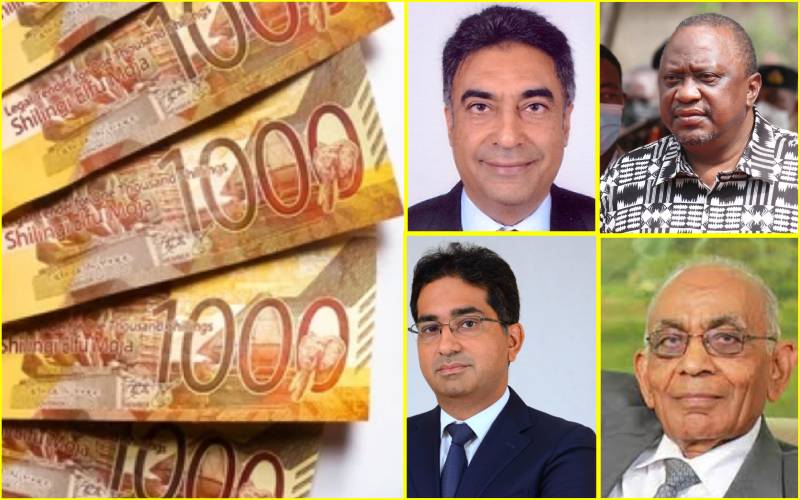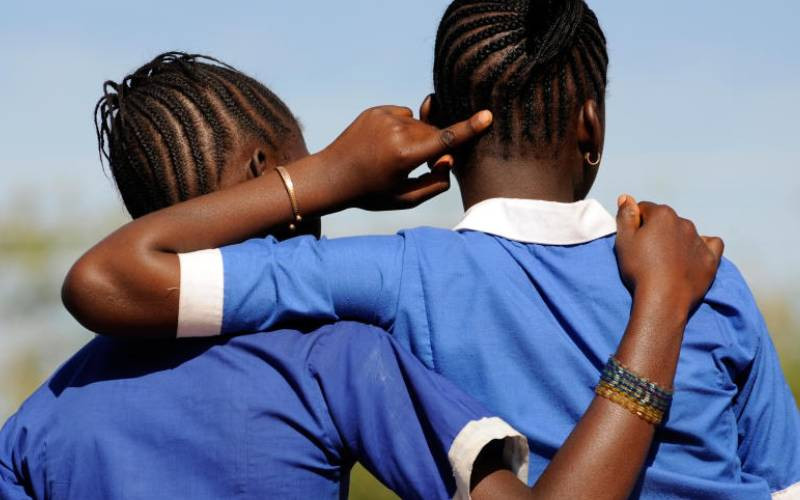
Bhimji Depar Shah, President Uhuru Kenyatta, Sameer Merali, and Jaswinder Singh Bedi. [Courtesy]
Two individuals control more wealth than what 16.5 million Kenyans own, a new report shows.
The Inequality Kills report by Oxfam, a charitable organisation, found that Sameer Naushad Merali and Bhimji Depar Shah families were worth $790 million (Sh89.5 billion) and $750 million (Sh86 billion) respectively as of November 30 last year.
Together, the wealth of the two individuals adds up to Sh175.5 billion, which is more than the wealth of 16.5 million Kenyans, pointing to the yawning gap between the rich and the poor.
Mr Sameer, the son of the late, Naushad Noorali Merali, is currently the CEO of Sameer Investments and chairman of Ryce East Africa and Nandi Tea Estates.
Bhimji, on the other hand, is the founder and current chair of Bidco Group of Companies and the father of Bidco Oil CEO Vimal Shah.
The report also shows that there were some 1,755 individuals with a net worth of $5 million (Sh566.5 million) or more as of November last year with wealth totalling $37.1 billion (Sh4.2 trillion).
This means that these individuals’ wealth as a fraction of Kenya’s Gross Domestic Product (GDP), or the country’s total output, is more than 40 per cent.
The Meralis and Shahs are not new to the super-rich rankings. They were the only Kenyans who made it to the fourth annual list of Africa’s richest people in 2014.
Other super-rich individuals as of the end of November last year included Jaswinder Singh Bedi, the managing director of Bedi Investments, which was responsible for the manufacture of personal protective equipment at the height of the coronavirus pandemic in the country. Mr Bedi’s net worth is estimated at $680 million (Sh77 billion).
The Kenyatta family with business interests spanning transport, insurance, hotels, farming, land ownership and the media industry also features in the list, coming fourth with a net worth of $530 million (Sh60 billion).
Ramco Group’s Rambhai Patel is the fifth richest Kenyan at $430 million (Sh48.7 billion).
Kenya does not have dollar billionaires, the report finds. Oxfam wants the government to inject more money into social protection to reduce inequality.
“It is transformative: for example, by 2030 Kenya and Indonesia could potentially cut their poverty rates by 25 per cent and 31 per cent respectively by investing 1.7 per cent of GDP now into universal social protection schemes,” says the report.
It shows that the wealth of the world’s 10 richest men has doubled since the pandemic began.
“The incomes of 99 per cent of humanity are worse off because of Covid-19. Widening economic, gender, and racial inequalities - as well as the inequality that exists between countries - are tearing our world apart,” reads part of the report whose lead author was Oxfam International Head of Executive Strategy and Communications Nabil Ahmed.
Between 2016 and 2021, the number of individuals with wealth over $50 million increased from 80 to 120. Their combined wealth increased from $12.73 billion to $17.4 billion, an increase of 36.8 per cent, adjusted for inflation.
The report notes implementing an annual wealth of two per cent on wealth of $5 million (Sh565 million) and above and five per cent on wealth over $50 million (Sh5.6 billion) would raise an additional $900 million (Sh101.9 billion) a year.
“An annual wealth tax applied to the wealth of multi-millionaires $900 million a year, enough to increase government health budget by 36 per cent or reduce households’ out of pocket health costs,” says the report.
 The Standard Group Plc is a multi-media organization with investments in media platforms spanning newspaper print
operations, television, radio broadcasting, digital and online services. The Standard Group is recognized as a
leading multi-media house in Kenya with a key influence in matters of national and international interest.
The Standard Group Plc is a multi-media organization with investments in media platforms spanning newspaper print
operations, television, radio broadcasting, digital and online services. The Standard Group is recognized as a
leading multi-media house in Kenya with a key influence in matters of national and international interest.



